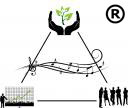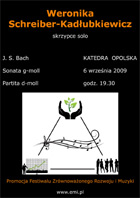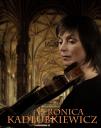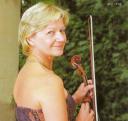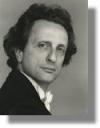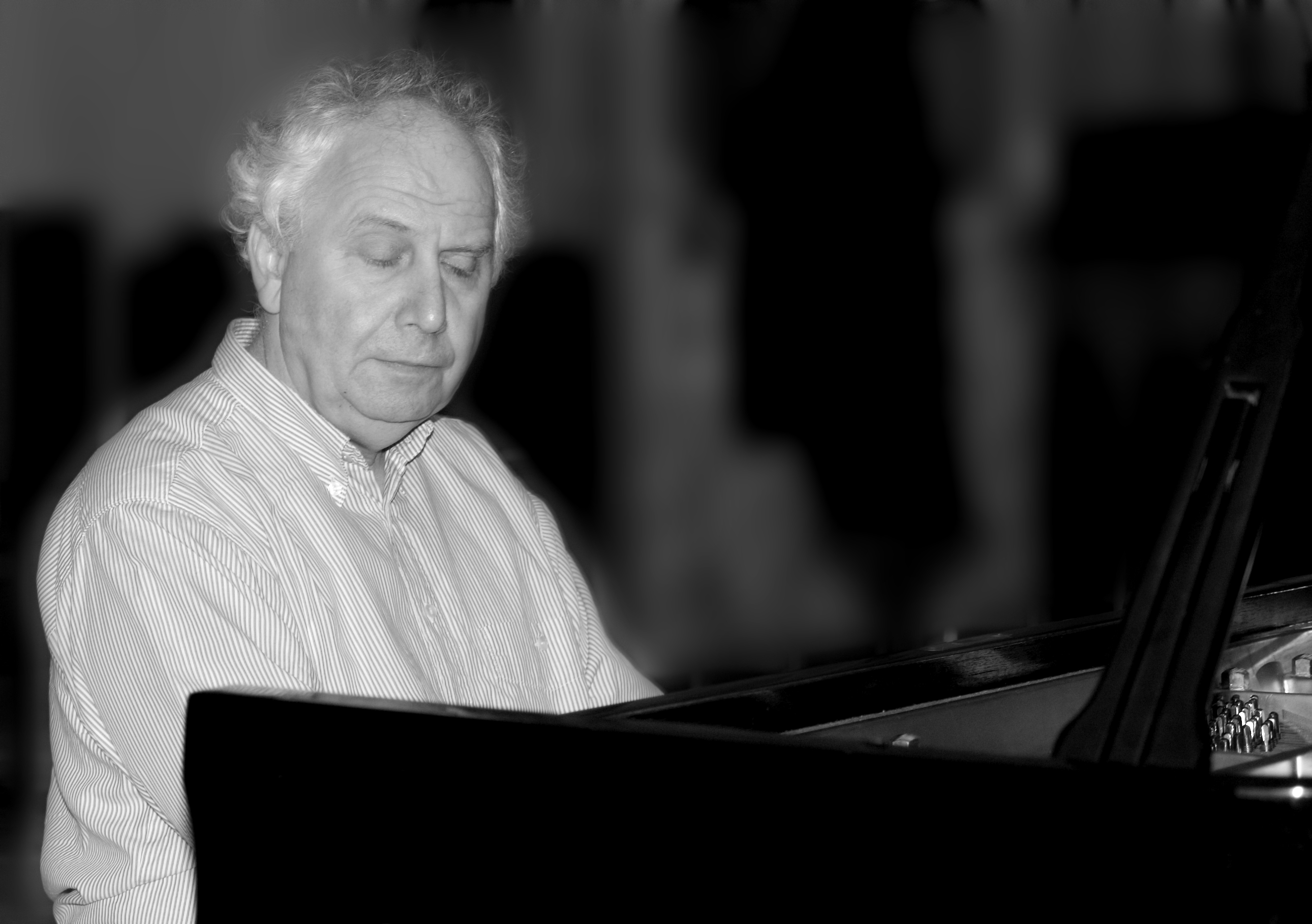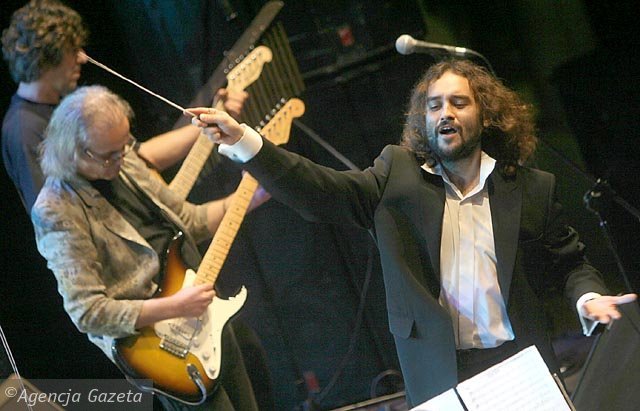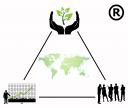Pianista Andrea Passigli studiował we Włoszech i USA. Ukonczyl z najwyzszym odznaczeniem Konserwatorium L. Cherubini we Florencji w klasie Marii Tipo. Na zaproszenie Rudolfa Serkina uczestniczył w Marlboro Music Festival. Rudolf Serkin miał duży wpływ na muzyczny rozwój artysty i jego szczegolne zainteresowanie wiedeńskim klasycyzmem. Silny wpływ na osobowość artysty mieli również Pablo Casals i Nikita Magaloff, z którymi spotykał się od dzieciństwa. Andrea Passigli jest solistą, kameralistą i posiada glebka znajomosc repertuaru Lieder. Grał recitale i koncerty we Włoszech, USA, Austrii, Angli, Holandii, Rosji, Rumunii, Jugosławii, na Węgrzech i w Polsce. Nagrał podwójny album z muzyką na fortepian solo Schuberta wydany przez “foné” oraz CD “Ema Records” z flecistą Alexandrem Duisbergiem, poświęcony francuskiemu impresjonizmowi, jak również CD z barytonem Leonardo Wolovsky z Lieder do tekstow Heinego. Andrea Passigli jest profesorem fortepianu w Konserwatorium G. Frescobaldi w Ferrarze we Włoszech.
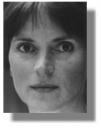 Skrzypaczka Weronika Kadłubkiewicz jest absolwentką Wyższej Szkoły Muzycznej w Warszawie w klasie Krzysztofa Jakowicza. Kontynuowała studia z Henrykiem Szeryngiem i Romanem Totenbergiem w USA. Solistka wielu orkiestr w Polsce, USA i Europie, koncertmistrz New Hampshire Symphony, Orchesta Filarmonica de Gran Canaria i Polskiej Orkiestry Kameralnej. Grała również z Boston Symphony i Orpheus Chamber Orchestra. Dwukrotnie uczestniczyła w Sommerkurse w Darmstadt, a na zaproszenie Lejarena Hillera była rezydentką Creative Associates w Buffalo NY. Występowała na scenach w Polsce, Hiszpanii, Włoszech, Szwecji, Francji, Niemczech, Szwajcarii, Kanadzie i USA. Utalentowana wykonawczyni skrzypcowej muzyki współczesnej ma na swoim koncie prawykonania utworów, z których wiele zostało napisanych specjalnie dla niej. Weronika Kadłubkiewicz brała udział w festiwalach: Warszwska Jesień, Marlboro Music Festival, Bach Aria, Monadnock Music i inne. Prowadziła klasę skrzypiec i muzyki kameralnej w Amherst College, University of Massachusetts i w Smith College. Nagrała płyty dla firm Gasparo i CRI. Po dwudziestu latach pobytu w Stanach Zjednoczonych przeniosła się do Paryża.
Skrzypaczka Weronika Kadłubkiewicz jest absolwentką Wyższej Szkoły Muzycznej w Warszawie w klasie Krzysztofa Jakowicza. Kontynuowała studia z Henrykiem Szeryngiem i Romanem Totenbergiem w USA. Solistka wielu orkiestr w Polsce, USA i Europie, koncertmistrz New Hampshire Symphony, Orchesta Filarmonica de Gran Canaria i Polskiej Orkiestry Kameralnej. Grała również z Boston Symphony i Orpheus Chamber Orchestra. Dwukrotnie uczestniczyła w Sommerkurse w Darmstadt, a na zaproszenie Lejarena Hillera była rezydentką Creative Associates w Buffalo NY. Występowała na scenach w Polsce, Hiszpanii, Włoszech, Szwecji, Francji, Niemczech, Szwajcarii, Kanadzie i USA. Utalentowana wykonawczyni skrzypcowej muzyki współczesnej ma na swoim koncie prawykonania utworów, z których wiele zostało napisanych specjalnie dla niej. Weronika Kadłubkiewicz brała udział w festiwalach: Warszwska Jesień, Marlboro Music Festival, Bach Aria, Monadnock Music i inne. Prowadziła klasę skrzypiec i muzyki kameralnej w Amherst College, University of Massachusetts i w Smith College. Nagrała płyty dla firm Gasparo i CRI. Po dwudziestu latach pobytu w Stanach Zjednoczonych przeniosła się do Paryża.
Kategoria: A.Passigli & V.Kadlubkiewicz | Komentarze wył. »
PROGRAM 1
******************************************
PROGRAMMA 2
*************************************************
PROGRAMMA 3 La Danza fra 800 e 900 S.Prokofiev da Romeo e Giulietta: M.Magin: Kujawiak P.Sarasate: Romanza Andalusa M. de Falla: Danza spagnola C.Saint-Saens: Capriccio su uno Studio in forma di Walzer <<<<<<<<<<<<<<<<<<<<<<<<<>>>>>>>>>>>>>>>>>>>>>>>>>>>> F. Chopin: Polonaise in do diesis min. op.26 n.1 (pianoforte solo) H.Wieniawski: Polonaise in la maggiore |
Kategoria: A.Passigli & V.Kadlubkiewicz | Komentarze wył. »
 They’ve met in 2006 in Paris…a place between Poland and Argentina…She – Polish, born to a musical Silesian family, plays classical and contemporary music all over the worldHe – born in Argentina, the cradle of tango, to a family where everybody plays tango on different instruments…
They’ve met in 2006 in Paris…a place between Poland and Argentina…She – Polish, born to a musical Silesian family, plays classical and contemporary music all over the worldHe – born in Argentina, the cradle of tango, to a family where everybody plays tango on different instruments…
They’ve met in tango…
Duo Cordato is inviting you to a tango, an emotional journey via laughter and fascination, flirt and jealousy, passion, sensuality and love. Manuel Romero said: “Tango is not only a dance. Tango is a kind of lifestyle, state of mind and philosophy. Tango was born from the very deep inside of a human soul and therefore its language is understood by every human being.”
Tango was born in the street. Today it is being played in grand concert halls and danced everywhere.
Tango is a ballroom dance originating from Buenos Aires in Argentina and Montevideo in Uruguay. Habanera and flamenco, the Spanish traditions transplanted to South America, mixed with “candombe”, the dance of African slaves performed and sang at street parades, are at its roots. The word “cum-tan-go” is being repeated in the refrain and this is where “tango” comes from. With a time “candombe” was transformed into “milonga”.
Astor Piazzola (1921-1992) was a musical genius for whom the national dance became a raw material on the basis of which he has invented a completely new music genre. He raised the status of tango from town music to classical music. Piazzola was a great visionary composer, recognised internationally. Unfortunately, he had to fight with the lack of understanding in his own country.
Kacper Podrygajło has written: “In Piazzola’s music the Bach tradition clashes with dances originating from Buenos Aires brothels…In the Baroque tradition everything was mixed up and nobody paid attention to possible misalliance. Gigue (old French ham) was worshiped and by means of this act became an integral part of the Baroque mass. Da chiesa sonata rarely occurred alone. Suite was composed of a cycle of dancing pieces which usually differed from their original versions. We find the same in Piazzola’s music. He writes tango in such a stylized manner that each piece of music differs from each other and, at the same time, they are identical with what they do not represent. However, it does not mean that they are written in a way Bach would have written them if he had lived to our days.”
Duo Cordato with Veronica Kadlubkiewicz violin and Sebastian Cordato guitar and voice perform music of Astor Piazzola’s as well as their own improvisations on dancing music from Argentina.
Kategoria: Duo Cordato | Komentarze wył. »
Café 1930 – Astor Piazzolla.mp3
Bordel 1900 – Astor Piazzolla.mp3
Milonga del Angel – Astor Piazzolla.mp3
Kategoria: Duo Cordato, Music | Komentarze wył. »
Astor Piazzolla and dancing rythms of Argentina
about 35 minutes of music of Duo Cordato
Weronika Kadłubkiewicz violin i Sebastian Cordero guitar and singing
| Astor Piazzolla | Bordel 1900 |
| Cafe 1930 | |
| Nightclub 1960 | |
| Concert d’aujourd’hui | |
| Libertango | |
| Milonga del Angel | |
| Improvisations based on dancing music of Argentina | |
| Payadora | |
| Palomita Blanca | |
| Milonga de mis Amores | |
| Los ejes de mi carreta | |
| Nocturna | |
| Cueca del violin | |
Kategoria: Duo Cordato | Komentarze wył. »
 They seem to have been cast in the same mould, very much like two beans in a sackful of coffee. It should be added – an exceptionally strong and aromatic coffee. Quite simply – “Doppio Espresso”.
They seem to have been cast in the same mould, very much like two beans in a sackful of coffee. It should be added – an exceptionally strong and aromatic coffee. Quite simply – “Doppio Espresso”.
They heard someone ordering a ‘doppio espresso’ in a bar and fell under the spell of the drink’s strength.
The fact that this is what they decided to call their duo tells us much about the kind of impact they want to make on listeners. Surely, their performances are not luke-warm.Interestingly enough, they became friends long before the duo saw the light of day. They were in secondary school at the time. They first met at the Piano Festival in Nałęczów and the masterclasses given there by Micha³’s father, the prominent pianist Marek Drewnowski.Daniel attended at that time the Secondary Music School in Krosno, studying in the piano class of Dorota Skibicka. He subsequently studied with Marek Drewnowski. Before he became his student, he once moved his future professor to tears with his playing of Chopin’s music. These were tears of emotion, to which the professor himself admitted. Daniel was already then a very sensitive and reflective man. He read a lot. He made much effort to strike a balance between emotion and intellect in his playing.Michał, for his part, drove to tears another outstanding pianist, Naum Shtarkman, to whom he presented his interpretation of Scarlatti’s Sonata in F minor in the same venue the previous year. Michał had always wanted to play an ambitious repertoire (Liszt, Rachmaninov) and he could listen passionately to his beloved Vladimir Horovitz, from whom he derived his musical inspiration.Studying together, Daniel and Michał continued to be close friends, even though the nature of their profession would rather provoke stiff competition between them. During their studies at the Conservatoire de Musique in Geneva (where they both went after graduating from the Music Academy in Łódź), they decided to set up a duo. They made their debut in the prestigious Victoria Hall in Geneva, with a programme including works by Leonard Bernstein and Astor Piazzolla. Right now, with Michał back in Łódź and Daniel in Krosno, their duo continues to perform and record. This debut CD is a discovery of the New World, for themselves and for music lovers. In Europe, the music of both Americas, and of South America in particular, is something new and somewhat exotic. These days it is simply fashionable, with almost all people easily recognizing the tune of Astor Piazzolla’s Libertango or the themes of Bernstein’s West Side Story. In addition to these two great masters, the CD contains miniatures by Piazolla’s artistic followers, Pablo Ziegler and José Bragato, as well as Brazilian Dance by the Canadian composer Roger Matton. This last piece is a like a symbolic blend of the CD’s two parts – the music of North and South America. It should be hoped that the great passion and commitment of the duo “Doppio Espresso” will help all listeners gain better insights into this music and fall in love with it.
Ewa Cisowska
Michał Drewnowski was born in Warsaw in 1977. He started learning to play the piano in Italy, when he was 8, under the supervision of his father, an excellent pianist Marek Drewnowski. After his return to Poland at the age of 14, he continued his musical education, at Karol Szymanowski Secondary Music School in Warsaw in the class of professor Bronisława Kawalla and Professor Ewa Pobłocka. In 2001 he graduated with honours from Bacewicz Music Academy in Łódź, where he studied under the guidance of his father, professor Marek Drewnowski. He also developed his skills in Genf Conservatory of Music with such distinguished teachers as Dominique Merlet and Pascal Devoyon; there he also obtained a diploma with distinction. He took part in many master courses given by such eminent pianists as Nauma Shtarkmann, Miłosz Magin, Fou T’song, Rudolf Kehrer and Eugen Indjic.
He is a prize-winer in the following competitions: Special Prize at the 1st Aleksander Tansman International Festival and Competition of Musical Personalities in Łódź (1996), First Prize at 13th Grażyna Bacewicz All-Polish Chamber Music Competition in Łódź (1998), at 32th Polish Piano Festival in Słupsk (1998), Second Prize at M.Masin International Piano Festival in Sangemini (Italy, 2000), Second Prize at Piano Competition A.GI.MUS in Rome (2005).
Michał Drewnowski gives concerts, both as a soloist and a chamber musician, in Poland, Italy, France, Switzerland, Luxembourg, Belgium, England, Austria, Czech Republic and Germany. He has performed with many renowned orchestras in Poland and abroad with leading conductors such as Piotr Wijatkowski, Janusz Powolny, Tadeusz Kozłowski, Vladimir Kiradjev and Stanislav Oushev. He participated in many prestigious festivals, such as Passage in Warsaw, Salon of Arts in Sofia, Festival Musicale di Norcia (Italy), Varna Summer Festival (Bulgaria), Cracow Spring Music Festival, Warsaw Music Encounter, Chopin Geneve Festival, Keminklavier in Kemi (Finland).
He also gave concerts in: Concerti Gianicolo in Rome, Steinway Kammersal in Kopenhaga, Kunstmuseum in Silkeborg (Denmark), Sala Bulgaria in Sofia, Wigmore Hall in London. In the period of 2000-2001 he participated as a pianist and also an actor at Teatr Nowy in Warsaw in a play of Adam Hanuszkiewicz “Chopin, his life, his love, his music”. He perfomed the main character – Frederic Chopin.
Michał Drewnowski is a cofounder of Voland Quartet, with which he gave concerts in many countries of Europe. They also made recordings for GEGA NEW company where they play the music of B.Bartok, A.Aroutunian, A.ben Shabetai, J.Bauer, G.Arnaoudov, H.Yotzov for two pianos and percussion. He is also a cofounder of piano duet Doppio Espresso, that specialises in music of American and Latinoamerican composeres, such as L.Bernstein, A.Piazzolla, P.Ziegler, and J.Bragato.
Daniel Eibin graduated from the Music Academy in Łódź, where he studied with Marek Drewnowski (a diploma with distinction), and the Conservatoire de Musique in Geneva, with Elizabeth Athanassova. His honours include First Prizes at the International Chamber Music Competition in Łódź (2001), the Chopin International Piano Competition in Antonin (1996) and the National Competition of Chamber Ensembles in Wrocław (1994). He is also a prizewinner of the Józef Hofmann and Ignacy Jan Paderewski Competition in Nałęczów (1997). He gave several concerts during the “Festival du Printemps – Sacre de la Musique” in France (1997). He held grants from the Minister of Culture (1996, 2001) and the Fondation Norbert Schenkel in Geneva (2004).
He perfected his skills attending masterclasses given by Janusz Olejniczak, Lee Kum Sing, Ivana Klansky, Alfonso Montecino and Eugene Indjic. He has made recordings for Polish Radio and Polish Television.
He is a co-founder of the piano duo “Doppio Espresso” which performs modern classical music. He developed a fine career, with regular performances in Poland and many European countries, both in recitals and in chamber ensembles performing music of various periods. In 2002 he began a teaching career. [/english]
Kategoria: Doppio Espresso | Komentarze wył. »
Kategoria: Doppio Espresso, Music | Komentarze wył. »
Kategoria: Doppio Espresso | Komentarze wył. »
For 2 piano
Astor Piazzolla : Libertango ( 6′)
Suite Porteña de ballet (12′)
Le Grand Tango (12′)
Milonga del Ángel (6′)
Leonard Bernstein : Symphonic Dances to WEST SIDE STORY (23′)
Pablo Ziegler : Milongueta (11′)
Asfalto (7′)
Sandunga (5′)
José Bragato : Guarania y Galopa Paraguaya (5′)
Roger Matton : Danse brésilienne (5′)
George Gershwin : Amerykanin w Paryzu (18′)
Błekitna Rapsodia (18′)
Koncert fortepianowy (16′)
****
Witold Lutoslawski : Wariacje na temat Paganiniego (7′)Francis Poulenc : Sonata na 2 fortepiany (15′)
Fryderyk Chopin : Rondo na 2 fortepiany (6′)
Maurice Ravel : Ma Mère l’Oye (15′)
La Valse (12′)
For Four-Hands
Astor Piazzolla : Cztery Pory Roku (20′)
George Gershwin : Summertime (4′)
I love you Porgy (5′)
****
George Bizet : Zabawy dziecięce (Jeux d’enfants) (28′)
Maurice Ravel : Ma mère l’Oye (15′)
La Valse (12′)
Gabriel Fauré : Suita DOLLY (16′)
Maurycy Moszkowski : Tance Hiszpańskie op. 21 (14′)
Tance Polskie op. 55 (12′)
Erik Satie : Trois morceaux en forme de poire (10′)
En habit de cheval (6′)
[/english]
Kategoria: Doppio Espresso | Komentarze wył. »
The Stone group was formed in 2003. Its members are Michał Wróblewski, playing the violin, and Adam Wróblewski, playing the cello. The Stone is an aviant-garde group, whose compositions are based on trance music, and that it why the goal of the concerts is to create a suggestive trance similar to ritual music from various cultures (elements of Oriental music, psychedelic rock and free jazz). Trying to define their work, the group uses the term electrosonoromedium (musicians are the medium of the new electro-acoustic sound). A concert is divided into thematically interrelated sets, improvised based on the prepared form. In 2005, in Leipzig, a premiere of the spectacle “Mom, let me dance Mahler” by the “Cinema” Theater, with music of the group, took place.
Michał Wróblewski is a graduate of the Academy of Music in Wrocław, Prof. Marek Pijarowski’s conductor’s class. He started his musical education at the age of 7 in the State Music School of the 1st grade in Wrocław, learning to play the violin. He earned his Professional Instrumentalist Diploma specializing in violin playing, studying under the supervision of an excellent violinist Prof. Michał Grabarczyk in Poznań. He cultivated his skills by attending international violin competitions with such masters as, among others, Prof. R. Totenberg (USA), R. Szreder (The Netherlands), K. Węgrzyn (Germany) and a conducting course under the guidance of Maestro Kurt Masur. As participant of modern music courses, he learned from Prof. S. Esztenyi and Prof. H. Fiore. Michał Wróblewski has been involved in chamber music for many years (winner of chamber music competitions). Being a member of the groups “Wróblewski – Trio,” “Musica Poetica Nova,” he took part in many festivals (among others “Wratislavia Cantans,” “Where the Fountains Play”) and his performance was often recorded for the needs of the radio, television, and movie industry. He conducted music workshops with theatrical groups from Poland and Germany (including graduates of Kolleg für dramatische Kunst in Bremen). His debut as a conductor took place in March 2004, in “Oratorium Marianum” Hall of the University of Wrocław, during the “Classic Premiere” festival. Wróblewski’s repertoire includes works of each kind of music, from classical to rock music.
Adam Wróblewski is a student of the Academy of Music in Poznań in Eugeniusz Zboralski’s cello class. He started his musical education at the age of 7, learning in music schools in Wrocław and Poznań. He cultivated his artistic skills by attending international cello courses, perfecting performance with such masters as, among others, Prof. R. Jabłoński (Spain), Prof. K. Michalik, Prof. S. Firlej and by attending modern music courses conducted by Prof. B. Schaeffer and Prof. S. Esztenyi. A winner of chamber music competitions, he has been involved in this music for many years. As a member of the groups “Wróblewski – Trio,” “Musica Poetica Nova,” he took part in many festivals (among others “Wratislavia Cantans,” “Where the Fountains Play”) and his performance was often recorded for the needs of the radio, television, movie industry and theater. From 2001 to 2003 he cooperated with the Sachsen-Anhalt Youth Symphony Orchestra. In 2002 Wróblewski took part in the Visegrád Youth Philharmonic tour through Poland, Hungary, the Czech Republic, and Slovakia.
Kategoria: The Stone | Komentarze wył. »
The repertoire of The Stone consists of original compositions, improvisations on previously agreed on themes. Each concert of The Stone offers different music, although the compositions have their titles:SINBAD THE SAILOR
OSIRISATION
LETTER TO E
MENTAL INSTITUTION
COSMIC TRAIN
McD
CALCULATING MACHINE FROM THE ATTIC
Kategoria: The Stone | Komentarze wył. »
